alas, the baguette
Monday, April 23rd, 2018After spending the last two months trying different recipes and employing a variety of techniques, I think I’ve finally found the right sourdough baguette recipe! By “right”, I mean it has all of the qualities I seek in a sourdough baguette. I have not traveled the world in search of the finest baguettes, but I do know what I like. My desire to document how to make a sourdough baguette is mostly for my own convenience as my notes are currently scattered between several messy and cryptic pages in my recipe notebook.
So what makes a good baguette in my book? I love the slightly floral and mildly sour notes that come from using sourdough starter as opposed to added yeast. The interior should have an airy and delicate structure without being mostly holes. I want to sink my teeth into bread, not air. It should have a well-browned crust with shine and blisters. That crust ought to crackle and shatter when cut. And my biggest motivation for making my own baguette: the base should not be caked in flour (ahem, Boulder Whole Foods). If someone made the perfect baguette, I would gladly buy it. Now I don’t need to.
Making the baguettes spans 3 days for me. The first day is mere minutes in the evening when you make the levain. The second day is the bulk of the time commitment. The autolyse step (letting the flour(s) absorb the water) can be as short as 30 minutes up to 4 hours. I tend to mix the dough early in the morning and give myself a 4 hour window to work, get a workout, run errands, etc. Then I spend the next 2.5 hours near the dough, but it only requires a minute of my time every 30 minutes to turn the dough (four sets of folds at 90 degree rotations). After the last turn, the dough can rest 30 minutes to an hour. I always choose the longer period of time which may or may not be a good thing. Once shaped, I put my dough in the refrigerator for a 12-24 hour cold proof. This means you need to make space for something like baguettes which require a lot of area, but not much height. I don’t proof at room temperature because I find shaping and handling cold dough to be far easier. The next day, I bake the bread which takes about 35-40 minutes per baguette. Planning when to fit this into your schedule is probably the hardest part.
The unicorn was the baguette. The rainbow unicorn was the épi de blé or sheaf of wheat.
my épi de blé
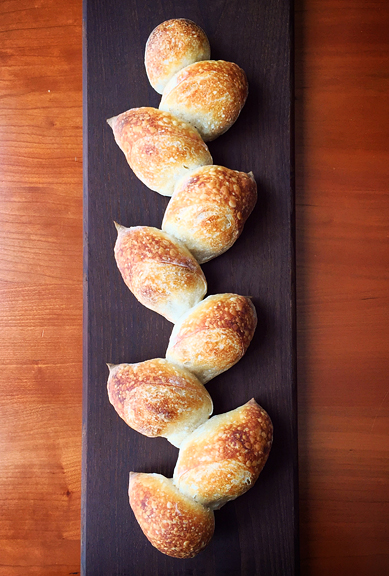
testing whole wheat percentages
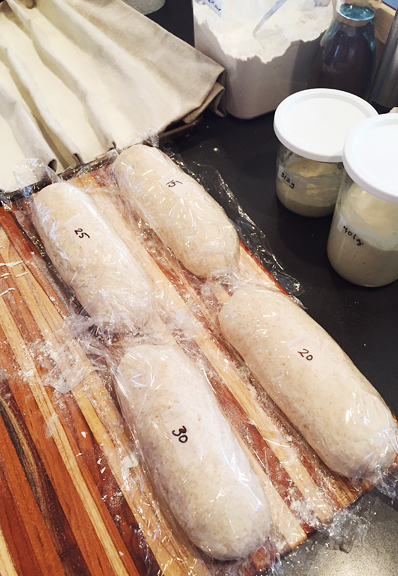
My baguette expedition rambled through a few recipes before I circled back to the dough used for my favorite sourdough bread, which is based on the recipe from Tartine in San Francisco. All the steps are the same up to the shaping, but I decided to swap some whole wheat flour for a little of the bread flour, gram for gram. [Using a kitchen scale rather than cups is going to see you to greater consistency and success when baking breads.] I made and we taste tested 0%, 2.5%, 5%, 10%, 15%, 20%, 25%, and 30% whole wheat flour baguettes. They all tasted GREAT. If entertaining, I would make a 0% (all bread flour) or 10% (10% whole wheat flour and 90% bread flour) baguette. The 0% is classic, but the 10% has a subtle nuttiness that I really love without feeling any heavier than the 0% baguette. The baguette does start to taste a little less floral and less sweet at 25% and 30% whole wheat flour.
This sourdough baguette recipe doesn’t use any additional yeast, it relies on the sourdough starter for leavening. If my starter is in the refrigerator, I’ll bring it to room temperature and feed it daily for a couple of days before making the levain on the evening of day 1 (sometimes I call it day 0).
the starter should be fed, happy, and bubbling
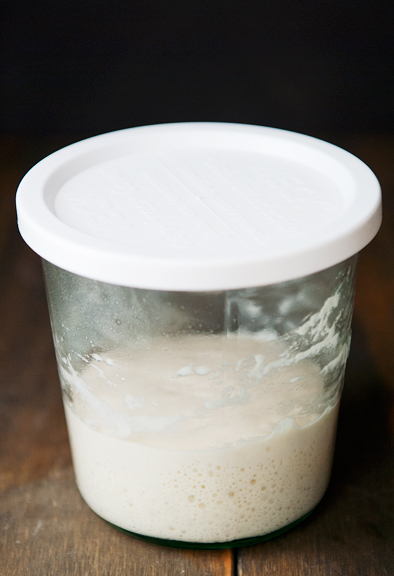
weigh out the starter
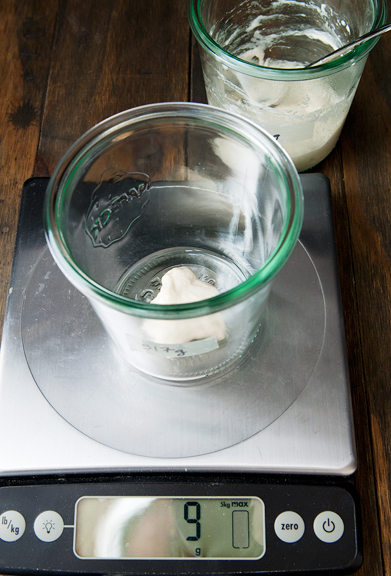
the levain: starter, bread flour, water
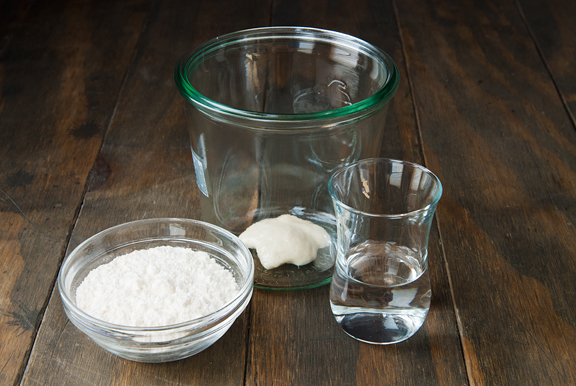
stir together
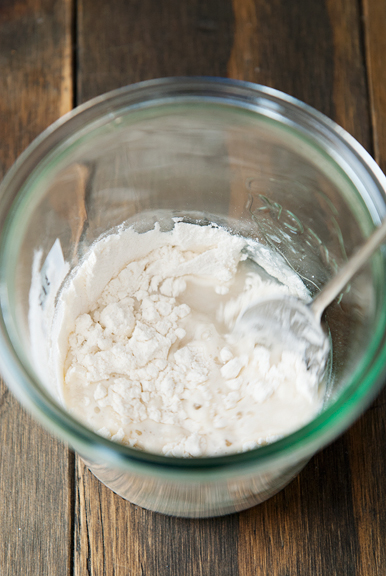
leave no dry pockets of flour
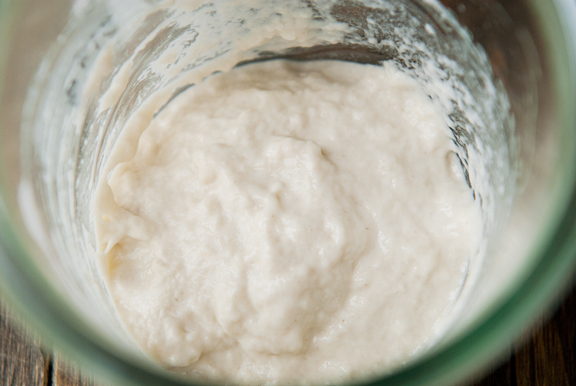
the levain is bubbly and ready after 8-12 hours
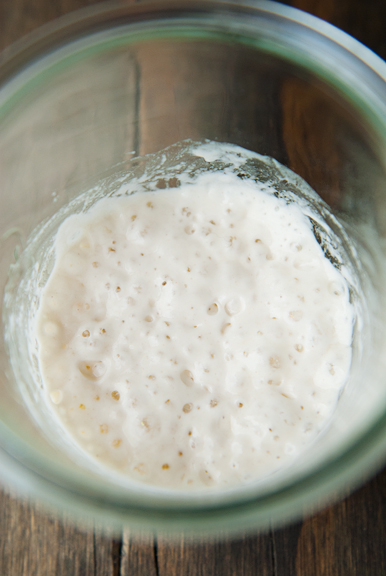
**Jump for more butter**












 Recipe: chinese fermented sweet rice (jiu niang)
Recipe: chinese fermented sweet rice (jiu niang)




